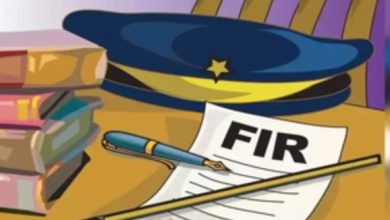Research finds new route to Monkeypox detection

New Delhi – Scientists have identified a new route to understand the virology of Monkey Pox Virus (MPV) and develop diagnostic tools for the infection as well as to find a novel path with therapeutic implications.
Outbreak of Monkeypox virus (MPV), also renamed as Mpox virus, has recently been declared a Public Health Emergency of International Concern (PHEIC) twice in a span of last three years. The outbreak has raised serious concern about its unanticipated spread across the globe, as the modes of transmission and symptoms are not well understood. A comprehensive understanding of virology, alongside the rapid development of effective diagnostic and therapeutic strategies, is of paramount importance.
MPV is a double-stranded DNA (dsDNA) virus. The detection of the extracellular viral protein gene through polymerase chain reaction (PCR) is a widely established technique for identifying MPV in clinical specimens. Common detection approaches, including PCR, rely on the amplification of double-stranded DNA (dsDNA), which also employ fluorescent probes for quantifying amplification.
While these probes are sensitive to dsDNA concentration, they lack the ability to differentiate between specific and non-specific amplification products. In contrast, specific sequences in DNA can fold into unique structures that deviate from the classical double helix, known as noncanonical nucleic acid conformations. Leveraging the potential of these unusual DNA structures as targets for small-molecule fluorescent probes, may open new avenues for the development of highly reliable diagnostic assays.
G-quadruplex (GQ) is one such unusual noncanonical conformation observed in guanine (G)-rich nucleic acid sequences where four guanines interact through hydrogen bonding forming a planar G-tetrad plane, and the stacking of multiple G-tetrads results in GQ formation.
Scientists from JNCASR, an autonomous institution of the Department of Science and Technology (DST), have identified and characterised highly conserved GQ forming DNA sequences—a set of four, within the MPV genome, and specifically detected a specific GQ sequence using a tailored fluorescent small-molecule probe, enabling precise detection of MPV. The identification, characterization and targeting of unusual nucleic acid structures such as GQs have therapeutic implications.
These GQ sequences are stable under physiological conditions, highly conserved and are not present in other pox viruses, other pathogens, and the human genome. These characteristics make the GQ sequences valuable targets for the development of diagnostic tools and therapeutic intervention.
The fluorogenic molecular probe (BBJL) developed by Sumon Pratihar, Ramjayakumar Venkatesh, Mohamed Nabeel Mattath, and Thimmaiah Govindaraju also delivers more than 250-fold enhancement in fluorescence output upon binding with a MPV GQs (MP2). The ability of BBJL to selectively detect this highly conserved sequence in the MPV genome sets a precedent for the development of detection techniques targeting noncanonical nucleic acids.
The molecular probe is non-fluorescent in absence of the target GQ-DNA and is the first practical demonstration of a GQ targeted diagnostic strategy for detection of Monkeypox virus (MPV). This represents the expansion of their modular diagnostic platform, GQ-targeted reliable conformation polymorphism (GQ-RCP), which was originally developed for the detection of SARS-CoV-2/COVID-19, by identifying MPV/Mpox-specific GQs and a novel fluorogenic probe which was earlier published in ACS Sensors
The sensitive probe can efficiently distinguish the target MPV-derived GQ from diverse other GQs, and other DNA conformations derived from human genome. The GQs identified in MPV genome can also serve as potential anti-viral targets.
Additional mapping of the MPV genome is being performed to identify potential GQ targets for future therapeutics. Consequently, this study augments the development of potential detection platforms based on GQ, and the GQs identified can be further investigated for their anti-viral properties.
Such molecular probes with superior conformation or sequences specific recognition of nucleic acids could alleviate the challenge in existing amplification-based techniques, in discriminating false-positive results arising from non-specific amplification. The identification and characterization of new GQ sequences in monkeypox virus (MPV) could help the broader scientific community seeking to understand the virology of MPV or develop diagnostic and therapeutic interventions.







